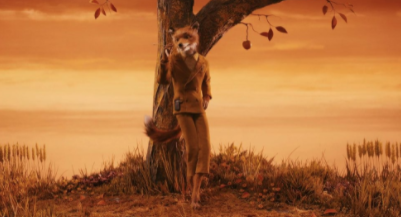Written by: Jaidyn Gayman, Staff Writer
CAPTIVATING: Color is an essential part of storytelling in the cinematic experience.
Usually, the biggest takeaway about a film may be the acting, storytelling, or even music. However, there are many more things when looking deeper in. Something as simple as color can tell you the mood or what you need to know about a character’s personality. Lots of films’ most iconic characters are most memorable for the colors they display in their clothes or design. Hue, saturation, and brightness can tell you much about a scene. There is a plethora of color schemes that are used in filmic expression. Some films use a monochromatic color scheme, meaning different variants of the same color. An example of this is Twilight. Throughout the cult following series, the films always use the same desaturated teals and cool-toned aesthetics. This very accurately reflects the grim, gloomy, and cold mood of the series. Throughout the films, there are few uses of warm tones as the movies’ subject matter is better matched with worn-out and bleak colors.
In the hit show, Euphoria, there are multiple times where a monochromatic color scheme is also shown. One of the main characters, Maddy Perez, is frequently shown wearing a variety of shades of purple. Purple is an amazing way to represent Maddy because it is often associated with royalty and status, and to say the least, she is definitely a leader. It can also represent a bit of moodiness and drama, which she quite frequently portrays. Another prominent color scheme in films is called analogous, meaning colors that neighbor each other on the color wheel.
Films seen using these schemes for example is Fantastic Mr. Fox. Through the majority of scenes, there is a strong use of browns, yellows, oranges, and reds. Continuing to give off a sense of coziness and warmth. Another popular color scheme to use is 2 opposite colors on the wheel. One of the most well-known movies for using complementary colors is Amélie. There is a constant use of green and red, giving it a very dynamic mood. It is consistent throughout the entire film. One-color represents passion and love, while the other shows a sense of peace and purity. This gives the viewer a clear peek into her life, personally seeing into her world. Complementary colors are used to show a high contrast effect and a vibrant visual for the audience. There are many varieties of color palettes and types. As you can see, you can accurately identify the right colors to evoke various emotions in the audience by utilizing hue, saturation, and brightness.

